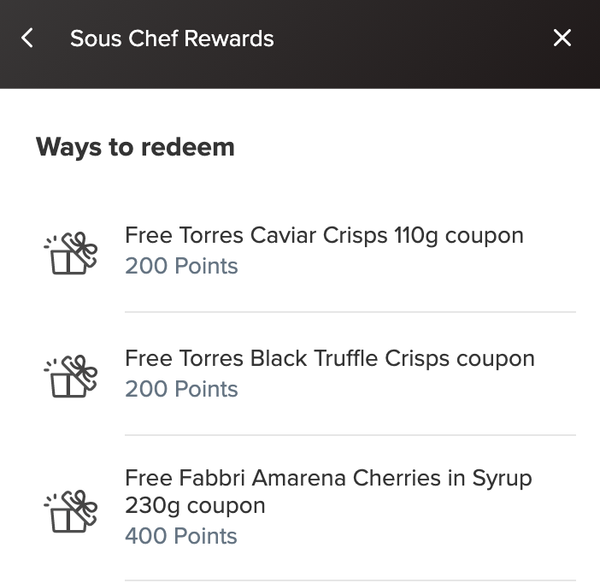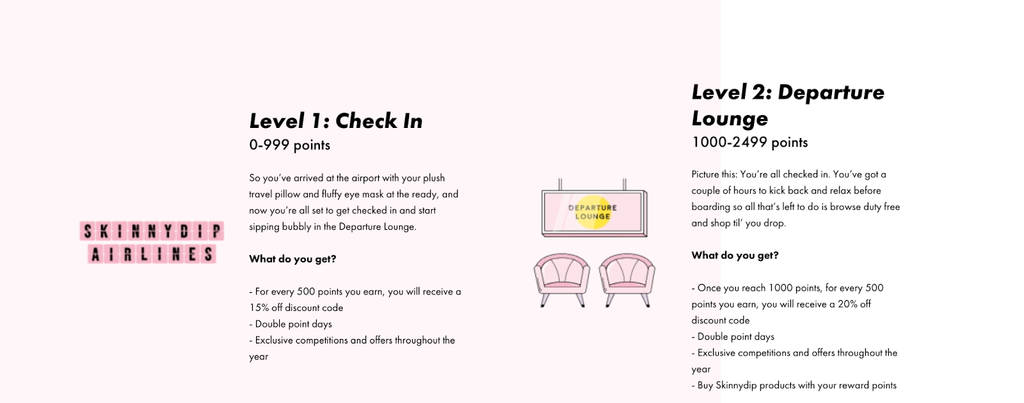From grocery store reward cards to VIP perks to climbing the loyalty ranks with your favorite stores, loyalty programs are everywhere. 72% of US adults are part of at least one loyalty program, and more than 90% of companies say they have some kind of rewards scheme. Why are they so omnipresent? The simple answer is that they benefit both customers and merchants.
Customer experience, loyalty programs, and retention
Loyalty programs are a big boost to the customer experience, delivering additional value and demonstrating to the customer that a brand appreciates them. They not only get the products they wanted to order, but they also get benefits and perks just because they wanted to make a purchase. Adding extra value to your customer experience is important, as 73% of customers say their experience is key in influencing their loyalty to a brand. That loyalty is crucial when it comes to maintaining customer retention for merchants.
Retention is much easier and more lucrative than acquisition. It can cost merchants five times more to acquire a new customer than to retain one, even though the probability of selling to existing customers is 60-70%. Moreover, existing customers are more likely to make higher value purchases more frequently. Loyalty is a key factor in retention, as loyal customers are five times more likely to make a repeat purchase and four times more likely to recommend that brand to a friend. Inspiring loyalty in a customer comes down to a number of factors, and one of those is what sort of incentives a store offers. 79% of customers say that loyalty programs make them more likely to continue doing business with a brand, and 75% say they’re more likely to make a repeat purchase after receiving an incentive.
Different types of loyalty program
Points
One of the most common loyalty program models is using a points-based reward system. Customers spend, they gain points, they spend those points on perks - simple. Those rewards may be discount codes and free shipping, or free products.

The benefits of operating a points-based loyalty program is that it can encourage customers to spend more to accrue points to get items or perks they really want. It’s also beneficial if your store’s products lend more to lower value, higher frequency purchases such as food and drink.
Tiers
Tiered rewards programs offer different rewards that scale with status. The best example of this is typically airlines who offer bronze, silver, gold etc. based on miles flown. The benefit of offering a tiered loyalty program is that it can be slightly easier to manage than a points-based system. Rather than determining points value of each reward, customers are instead sorted into tiers based on their lifetime purchase value.

Offer smaller rewards for the first tier such as birthday rewards, discounted shipping, and early sale access. Scale these accordingly depending on the tier, offering higher value rewards and exclusive offers. By displaying these on your site, customers will see what they can get if they make future purchases. They’ll also get access to rewards more immediately than points, as they won’t need to save up their points on a rolling basis, and won’t lose access to lower reward tiers over time.
Paid Benefits
Paid loyalty programs are as they sound - the customer pays a fee for access to different perks. These payments are usually a one-off annual payment, but can also be monthly depending on the perks and program details. These benefits will often be of higher value than a standard free loyalty program for example unlimited free shipping, a flat discount, exclusive members-only sales etc. The most well-known example of this would be Amazon Prime.

It may seem a bit strange to charge customers for a loyalty program - after all, you’re meant to reward them for their decision to make a purchase. However paid programs can be of benefit to both the store and customer. With the example of Amazon Prime, by offering free delivery it takes away that barrier to purchase of shipping fees. Unexpected shipping costs are a big reason for abandoned carts, so by offering a flat fee to bypass this it encourages the customer to make those purchases they may otherwise have abandoned. It also has the benefit of having more buy-in from the customer; if they’re paying for the perks, they’ll be more invested in making the most of them. This boosts engagement and active retention.
Which is the best type of loyalty program?
Every business is different, with their own unique set of challenges and customer needs. Loyalty programs can be as simple or as complex as you want them to be, but it all comes down to which format and complexity suits your business. You can start simple and build into it, adding new features as it gains traction. Alternatively you can fully fleshed out paid benefits program, and tweak the features and pricing as you learn more about what features your customers actually respond to.
Regardless of which route you choose, the principles of what makes a program successful remain largely the same, so let’s look at some of those.
How to develop and maintain a successful loyalty program
Give customers what they actually want
There’s no point in running a loyalty program that your customers don’t utilize. 44% say they’re satisfied with loyalty programs, which means there’s a huge opportunity to improve on the value these programs deliver. You need to ensure that you’re using your program to drive value for your customers, and this in turn will boost retention. There are a few ways you can ensure that your program is delivering what your customers actually want from it:
-
Surveys - Ask customers what they’d want to see in a loyalty program. What format do they prefer? What sort of rewards or benefits would they like to see? If you’re already running a program, ask those users who take advantage of it most frequently how they would rate the program and what improvements you could make.
-
Regular reviews - Make sure that you’re checking in to see which benefits your customers are actually using. If you notice there are features or rewards that are rarely redeemed, this might indicate that it isn’t something your customers are interested in.
- Testing - If there’s a benefit or feature that you’re considering adding to your loyalty program, test it first. You can tell your customers that the feature will be available for a limited period of time, and monitor the response. If it’s positive and many customers are using it, you can implement it as a permanent feature.
Communicate with your members regularly
Communication is key in many different areas of the customer experience, and the same goes for loyalty programs. You might assume having rewards and perks would be enough, but you can’t expect customers to check in on their status constantly - only 15% say they check a loyalty program daily. Checking rewards is something they’ll typically do when they happen to be on your site already and thinking of making a purchase, rather than something they actively visit your site to check. Therefore you need to make sure they’re reminded of how great the rewards are waiting for them. Use email and SMS to communicate with them about:
-
Reminders of their reward status - these can be automated, reminding them of what perks they can either redeem with points, receive as part of their status tier, or pay for.
-
Prompt to show how close they are to gaining new perks - if a customer hasn’t made a purchase in a while, show them what perks they’re close to if they make another order or gain another status tier.
-
Bonus points - If you want to tempt a customer back onto your store, you can run limited time offers giving them bonus points on a purchase, and showing what they could get for those points. If you’re using a tier system, you could give them limited time access to the perks of the next tier above them.
- Rewards emails post-transaction - When a customer does make a purchase, include details about their rewards in transactional emails. It can show how many points they’ve gained or how close they are to the next tier of perks. If you’re operating a paid loyalty program, it could detail which perks they were able to use such as shipping discounts and how much money they’ve saved by being a member.
By regularly including your loyalty program as part of your email and SMS communication with customers you can promote the program, drive further loyalty, and also remarket to existing customers.
Deliver a personalized experience
Personalization in ecommerce is a growing concern for consumers. They have so much choice in the brands they spend their money with that it takes for something really special to catch their attention, and one of the ways you can do that is to personalize their experience. 87% of consumers are open to brands monitoring details of their activity online if it leads to more personalized rewards, but only 22% say that they’re satisfied with the level of personalization they receive in loyalty programs.
This leaves a huge amount of untapped potential in personalizing your loyalty program for customers. Doing so will allow you to stand out from the competition, by delivering a program that offers an experience tailored to each customer. The way to do this is through making the most of your store data. Shopify merchants have access to a rich amount of data about their customers from the products they buy to where they live and how frequently they make a purchase. Use this to deliver:
- Custom bonus loyalty rewards depending on product or category purchased
- Personalizing loyalty communication with the customer’s details
- Special rewards on occasions e.g. birthdays, loyalty membership anniversary.
- Send them emails with recommended reward perks based on their loyalty program and purchase activity. E.g. If they normally buy coffee for an aeropress, send them a notification when they have enough points to redeem against a free aeropress accessory.
Creating this unique experience will further boost your already well constructed loyalty program, and deepen the relationship your customer has with your brand.
Use a strong integration to manage your program
If you’re a Shopify merchant thinking about offering a loyalty program then great news - there are several apps for that. The Shopify App Store gives merchants access to a wide range of apps and integrations for their store, and you’ll have no problem finding loyalty program integrations. However it’s key that you make use of a really powerful one that will minimize the amount of manual time spent on managing your program, and make use of your store data to maximize the value for your members. Our top recommendation for this is Loyalty Lion.
Loyality Lion is a powerful loyalty program integration that works seamlessly with not just your Shopify store, but also with a wide range of other platforms so your program can also work with your chosen platforms for email, subscriptions, customer service, and more. It facilitates omnichannel engagement, smart rewards communication, and a high level of customization so you can design a loyalty experience unique to your store and customers.
-----
Beyond delighting customers with perks and improving your store’s retention, loyalty programs are an excellent way to strengthen the relationship you have with your customers from the moment they sign up. By using store data to personalize the experience, and offering rewards your customers really want, you can deliver a program that truly rewards their loyalty to your store.

